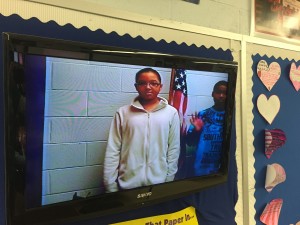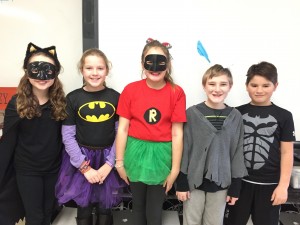Have you ever littered or thrown trash on the ground? The articles “Drinking Water: Bottled or from the Tap?” by Catherine Clarke Fox and “Art for Ocean Animals,” by Elise Jonas-Delson have numerous similarities and differences. They both discuss pollution and littering, but in different ways. In my essay, I will compare and contrast “Drinking Water: Bottled or from the Tap?” by Catherine Clarke Fox and “Art for Ocean Animals,” by Elise Jonas-Delson. Let’s discuss about their numerous similarities.
“Drinking Water: Bottled or from the Tap?” by Catherine Clarke Foxand “Art for Ocean Animals,” by Elise Jonas-Delsonhave numerous similarities, for example, They are both about litter/littering because they talk about the harm they can do the environment. Another similarity is they are both about some body or state of water, in “Drinking Water: Bottled or from the Tap?” by Catherine Clarke Fox, it is from the tap or water bottles. In “Art for Ocean Animals,” by Elise Jonas-Delson, it talks from the ocean and marine life. Also, these two articles are written in 3rd person, using words like: Her, she, he, it, and etc. The final reason is they both talk about reusable items, in “Drinking Water: Bottled or from the Tap?” by Catherine Clarke Fox it states “Plastic bottles can be turned into items like carpeting or cozy fleece clothing.” That means if you have carpets in your house, it’s most likely made of plastic. In “Art for Ocean Animals,” by Elise Jonas-Delson it talks about turing pollution into sculptures, in the text it says “One of Angela’s sculptures is a turtle. The turtle’s head is an old garbage can lid.” and the text also states “Another sculpture, called Fish Bite Fish, is shaped like a fish and made out of little bits of plastic that contain tooth and claw marks from the fish and crabs that tried to devour the plastic.” and the last detail the text states is “The Sea Star figure is made of glass and plastic bottles.” Those were the similarities that “Drinking Water: Bottled or from the Tap?” by Catherine Clarke Foxand “Art for Ocean Animals,” by Elise Jonas-Delson had in common. Let’s discuss the differences between the two passages.
“Drinking Water: Bottled or from the Tap?” by Catherine Clarke Foxand “Art for Ocean Animals,” by Elise Jonas-Delson also differ from each other in many ways. In “Art for Ocean Animals,” by Elise Jonas-Delson the setting is in Oregon because in the text it states “Pozzi started Washed Ashore when she noticed plastics on the beaches in Oregon,” so that made me think she was in Oregon. However in “Drinking Water: Bottled or from the Tap?” by Catherine Clarke Fox it states “In order to make all these bottles, manufacturers use 17 million barrels of crude oil.” So, that means the people work in factories all over the world. Even though the passages are both about water, in “Drinking Water: Bottled or from the Tap?” by Catherine Clarke Fox the water either comes from bottled or tap water. On the other hand in “Art for Ocean Animals,” by Elise Jonas-Delson the water comes from the ocean. In “Drinking Water: Bottled or from the Tap?” it states “Water is good for you, so keep drinking it. But think about how often you use water bottles, and see if you can make a change.” so that means don’t drink too much water from bottles, consider drinking a cup from the tap. In “Art for Ocean Animals,” by Elise Jonas-Delson it states “Artist Angela Haseltine Pozzi doesn’t throw it away. She uses the trash to create giant sculptures of marine animals.” That means Angela Pozzi (also know as Pozzi) makes sculptures. Those two statements from the texts state very different subjects. “Drinking Water: Bottled or from the Tap?” by Catherine Clarke Foxand “Art for Ocean Animals,” have numerous similarities and differences.
In conclusion, these two passages have details that they have in common, and details they don’t, but that doesn’t change the fact that they both talk about pollution and the harms it can cause to Earth. We can all make a change if we stop littering and save our entire environment. If we all stop littering, we can have life again, and bring back the trees, plants, animals, and sky. You can make pollution into cool decorative objects, like sculptures, rugs, and clothing. Make the world a better place, by recycling objects that are recyclable like milk jugs, water bottles, and paper. And stop littering. If I stop littering, I would be so happy to see all the beautiful trees, plants, animals, and sky. So please, stop littering, and save the earth.

